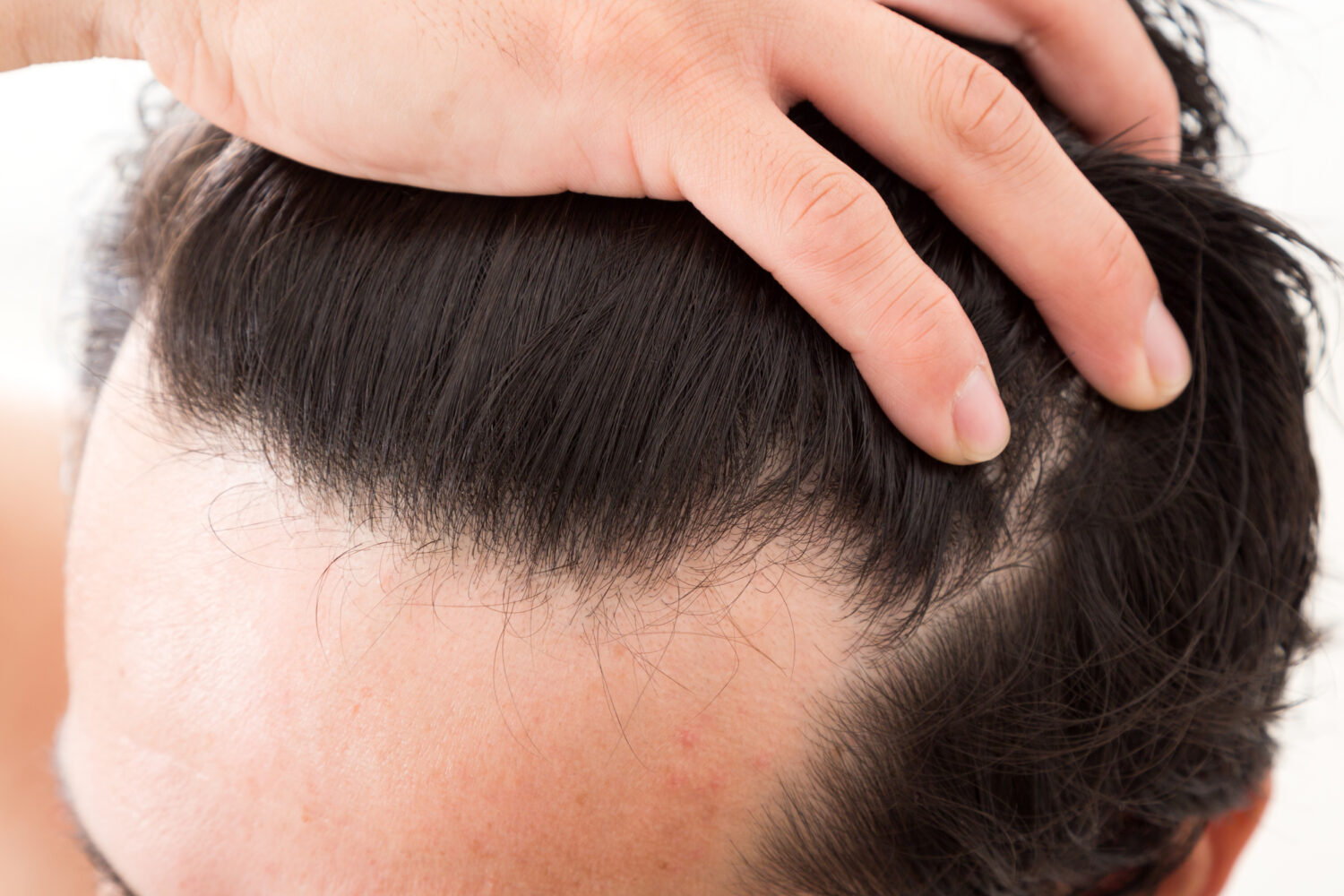
When you realize that the hair on your head is thinning, you may feel anxious. If you look in the mirror and see your hair thinning in an M-shape, you may be reluctant to let go of your hat or change your hairstyle.
This article explains the causes of M-shaped baldness, how to prevent it, and even how to treat it if it has already progressed. Please take a look at this page as a first step in facing your hair problems.
AGA, a progressive alopecia unique to men, is featured in this article.
この記事で説明する内容は?

Kentaro Kato, Hospital director of Osaka AGA Kato Clinic group, specializing in comprehensive hair treatment. We specialize in cutting-edge treatments for a variety of clinically proven effective treatments for thinning hair and hair loss. Graduated from Faculty of Medicine, Kinki University in 2001 Worked at plastic surgery of Osaka Medical and Pharmaceutical University Hospital as an anesthesiologist from 2001 to 2005. Worked as a head of plastic surgery at major cosmetic surgery, Hair Transplant Department from 2005 to 2011. Opened Osaka AGA Kato Clinic in 2011. Japan Society of Plastic and Reconstructive Surgery, Regular Member. The Japanese Society for Regenerative Medicine, Regular Member. World Academy of Anti-Aging & Regenerative Medicine, Regular Member.
What is M-shaped Baldness?
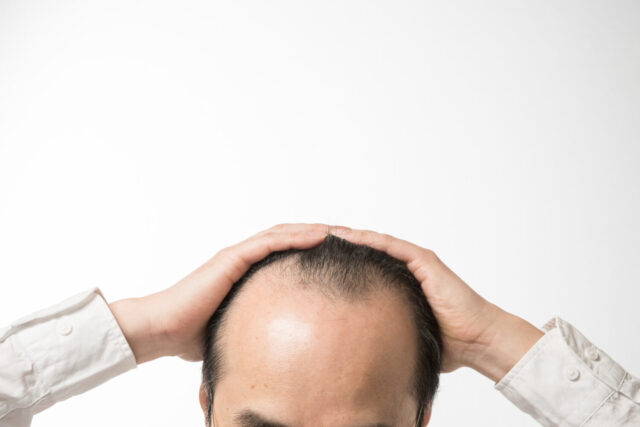
M-shaped baldness is a type of male pattern baldness in which the hair recedes, especially in the frontal area. In general, this pattern refers to an M-shaped formation of the hairline, with deep recession on either side of the forehead and relative retraction in the center.
This section describes the characteristics of M-shaped baldness and how it differs from other alopecia.
What are the characteristics of M-shaped baldness?
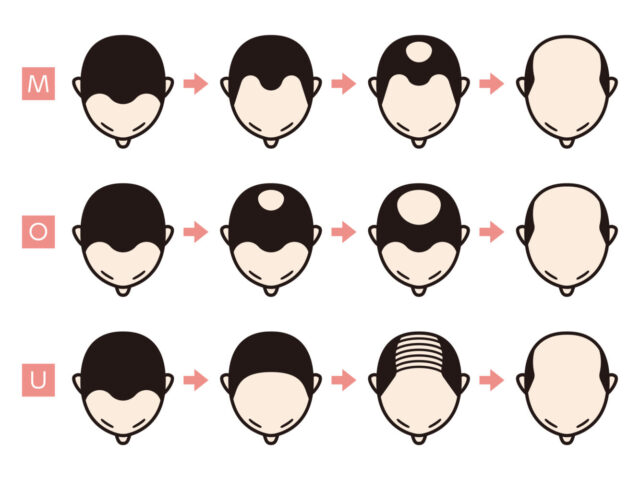
M-shaped baldness is more common in men because it is strongly influenced by male hormones. It is particularly likely to occur in people in their late 20s.
As the alopecia progresses, the overall amount of hair may decrease, eventually thinning to the top of the head. Therefore, it is necessary to constantly check the condition of one’s scalp and take early detection and early countermeasures.
Another symptom specific to M-shaped baldness is a change in the thickness and color of the hair. If symptoms such as thinning of hair and lightening of hair color appear, we suspect the progression of M-shaped baldness and recommend that you receive a professional diagnosis.
Difference between M-shaped baldness and other alopecia
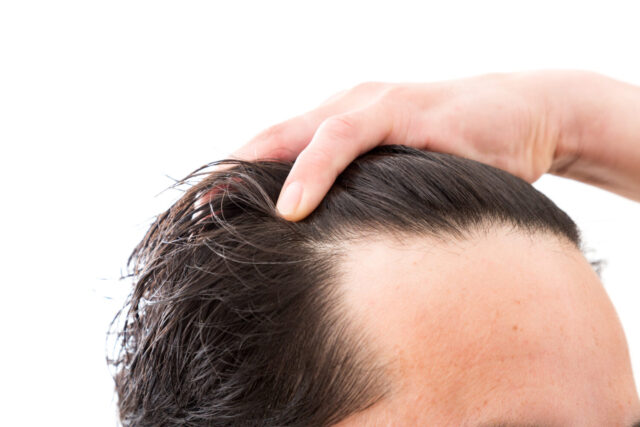
Other alopecia include alopecia areata and diffuse alopecia. These alopecia have different characteristics and causes from M-shaped baldness.
Alopecia areata is a condition in which hair suddenly falls out in specific areas, such as the scalp or face (beard). It is generally caused by stress or immune abnormalities, and unlike M-shaped baldness, it can occur in both men and women.
Diffuse alopecia is another condition in which the hair on the entire head thins uniformly. This is seen mainly in women and is mainly caused by hormonal imbalance and iron deficiency.
All of these conditions can cause hair thinning, but the causes and treatments for each are very different; in the case of M-shaped baldness, the recession of the hairline is more pronounced and can be detected and treated at an early stage. This is why it is important to carefully monitor the condition of your scalp and consult a doctor if you notice any changes.
What are the Diagnostic Criteria for M-shaped Baldness?
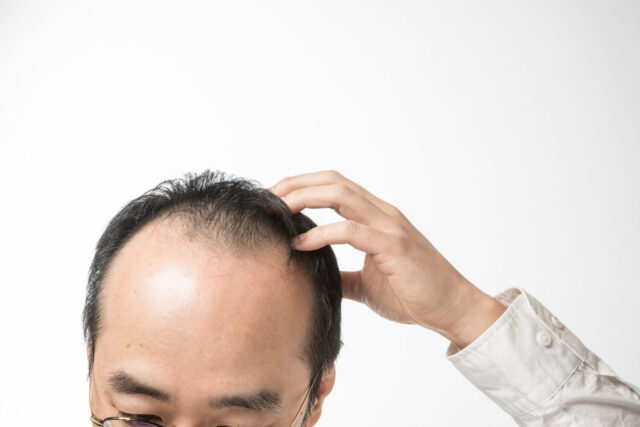
The diagnostic criteria for M-shaped baldness are determined by the pattern of thinning hair, the thinness of the hair on the head, and the degree of recession of the hairline. Once a diagnosis of M-shaped baldness is made by a dermatologist or specialized hair clinic, appropriate treatment is suggested. Let’s take a closer look at the specific diagnostic criteria.
Hair thinning
The characteristic symptom of M-shaped baldness is thinning of the hair and especially recession of the hairline. First is the thinness of the hair, which is often judged by the visibility of the scalp. The thinner the hair, the more easily the scalp can be seen through it.
In particular, if you look at the top of your head in the mirror and notice that your scalp is more visible than before, this could be a sign of thinning hair.
Receding hairline
The receding hairline is especially noticeable when the hair at both ends of the forehead, the part that forms the “M” shape, thins. As the hairline recedes, the forehead becomes wider and the hairs toward the crown of the head form an “M” shape.
While it is important to identify these symptoms yourself, it is still important to seek professional opinion.
Diagnosis of M-shaped baldness by a doctor
Diagnosis of M-shaped baldness is performed by a doctor with expertise in the field. Specifically, a dermatologist or a doctor at a hair loss clinic is responsible for the examination.
The consultation begins with a visual scalp check. The condition of the scalp, the thinness of the hair, and the degree of recession of the hairline are observed to determine the possibility of M-shaped baldness.
For a more detailed diagnosis, the condition of the scalp is examined in detail using specialized equipment.
Hair density, the condition of hair follicles, and the hair cycle are investigated, and the degree of progression of M-shaped baldness and the expected future rate of progression are evaluated based on the results.
In this way, a professional diagnosis enables a more accurate assessment of the current condition and selection of an appropriate treatment method. If you are concerned about the condition of your head of hair or feel that your hair is thinning, we recommend that you receive a diagnosis at a medical institution as soon as possible.
Causes of M-shaped Baldness
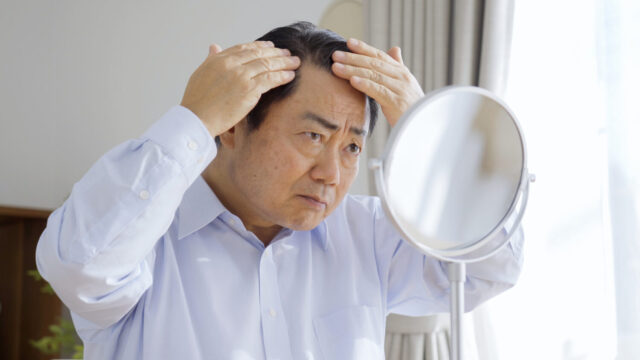
The main causes of M-shaped baldness can be broadly divided into the following
- Genetic factors
- Hormone balance
- Lifestyle
Each is described in detail.
Genetic factors
Genetic factors are one of the most significant contributors to M-shaped baldness. If you have parents or grandparents with M-shaped baldness, you may inherit the gene, thus increasing your chances of developing M-shaped baldness.
Hormone balance
Hormonal balance is also said to be a major factor. In particular, dihydrotestosterone (DHT), a type of male hormone, affects hair matrix cells in the scalp and prevents hair growth.
Excessive production of this hormone or overreaction of the scalp can cause thinning of the hair and shortening of the growth cycle, which can lead to M-shaped baldness.
Stress and lifestyle
Stress and lifestyle can also cause M-shaped baldness. In particular, irregular lifestyle, lack of sleep, unbalanced diet, lack of exercise, and other lifestyle habits can have a negative impact on scalp and hair health.
Stress also has a significant impact on scalp and hair health. Excessive stress can lead to hormonal imbalance and an increased inflammatory response in the body. This can worsen the scalp environment and cause M-shaped baldness.
Therefore, maintaining a healthy lifestyle and properly managing stress are very important factors in preventing M-shaped baldness.
Can’t M-shaped Baldness be cured?
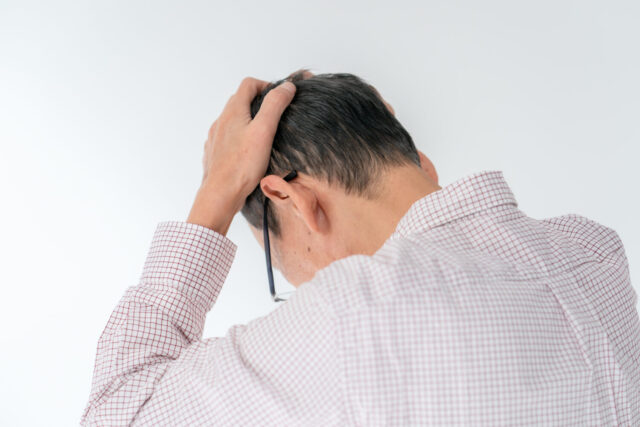
Once M-shaped baldness has progressed, it is considered difficult to completely reverse the condition. However, while treatment of M-shaped baldness takes time, it is possible to slow the progression of the condition if treatment is started early.
Finding the right treatment for your lifestyle and hair condition is also key to success.
The key to improvement is early detection and treatment
The biggest key to improving M-shaped baldness is to detect the symptoms early and begin appropriate treatment; early symptoms of M-shaped baldness are thinning hair, a change in hair texture, and increased hair loss. If you find any of these symptoms, it is important to consult a professional medical provider.
Currently, treatments for M-shaped baldness include drug therapy, topical medications, the use of supplements, and dietary and lifestyle changes. More direct treatment options also include medical technologies such as hair transplants and laser therapy.
Treatment for Advanced M-shaped Baldness

Treatment options for advanced M-shaped baldness range from medical treatment to medical surgery. Specifically, they include the following
- Oral and topical medications such as finasteride and minoxidil
- Hair replacement surgery
- Propecia
Each is described in detail.
Finasteride and minoxidil
Finasteride and minoxidil are drugs commonly used in the treatment of alopecia.
Finasteride is an oral medication that suppresses the production of DHT (dihydrotestosterone), a type of male hormone, and makes hair cells less susceptible to DHT. As a result, hair growth is promoted and thinning hair can be expected to improve.
On the other hand, Minoxidil is mainly used as a topical drug, and when applied directly to the scalp, it promotes the division of hair matrix cells and activates hair growth.
Related Articles: Minoxidil and Propecia (finasteride)
Hair replacement surgery
Hair transplant surgery is the transplantation of hair taken from the rear or side of one’s own scalp into areas of thinning hair. In recent years, advances in hair transplant surgery technology have made it possible to achieve a natural appearance. However, the surgery can be expensive and is not suitable for everyone, so it is important to obtain a professional opinion from a physician.
Propecia
Topical drugs containing minoxidil as the main ingredient (over-the-counter drugs such as “RiUP” and “Rogaine”) are applied directly to the scalp to promote hair growth.
On the other hand, Propecia is an oral medication whose main ingredient is finasteride, which reduces the effects of male hormones and promotes hair growth.
If used appropriately under the guidance of a physician, these drugs can be expected to promote hair growth and slow the progression of M-shaped baldness. However, it is important to select the appropriate treatment method, taking into consideration side effects, cost, one’s own physical constitution, and lifestyle.
Related Articles:What is Propecia?
Conclusion
In this article, we explained the causes and characteristics of M-shaped baldness. It also explained the importance of reviewing unhealthy lifestyle habits and developing a healthy lifestyle.
The key to improving M-shaped baldness is early detection and appropriate treatment.
For advanced M-shaped baldness, treatments such as oral and topical medications including finasteride and minoxidil, and hair transplant surgery are effective.
If you are concerned about the progression of M-shaped baldness, consult a professional medical institution with reference to the treatment options described in this article. Why not start doing what you can now to reduce the progression of thinning hair and M-shaped baldness?










